Main menu
Common skin conditions

NEWS
Join DermNet PRO
Read more
Quick links
Blepharitis — extra information
Blepharitis
Author: Dr Kenneth Wong, Dermatology Registrar, Greenlane Hospital, Auckland, New Zealand, 2009.
Introduction Causes Symptoms and signs Complications Treatment
What is blepharitis?
Blepharitis refers to inflammation of the eyelid margin. There are two variants based on the location of the inflammation:
- Anterior blepharitis affects the external eyelid, where the eyelashes are attached.
- Posterior blepharitis affects the inner eyelid in contact with the eyeball.
What causes blepharitis?
Anterior blepharitis may have one of several causes.
- Staphylococcal infection: the base of the eyelash is often colonised by the bacteria
- Seborrhoeic dermatitis / dandruff: the eyelid may also be colonised by yeasts (malassezia)
- Ocular rosacea: rosacea is an inflammatory disorder resulting in flushing, facial redness and spots
- Infestation of the eyelash by Demodex mite (demodicosis)
- Contact allergy to substances coming into direct contact with the lid margins, including rosin in mascara and preservatives in contact lens solutions.
Posterior blepharitis is the result of abnormalities of meibomian gland function in the inner eyelid. This gland normally produces oil, which is a component of the normal tear film. In blepharitis, the secretions from this gland thicken and block the gland.

Nonspecific blepharitis

Blepharitis due to rosacea
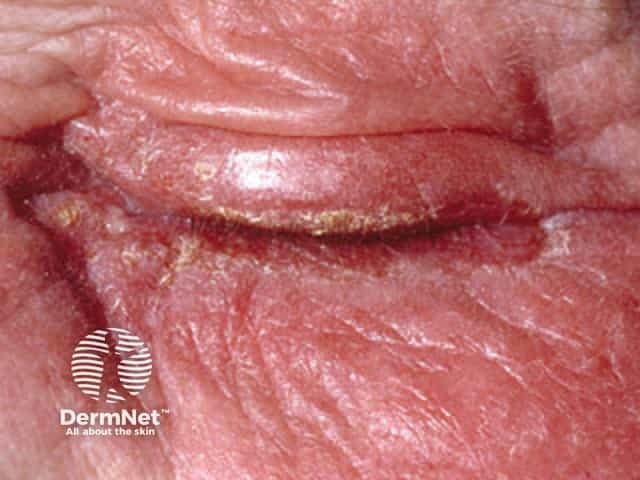
Contact allergy
Atopic dermatitis, seborrhoeic dermatitis and psoriasis affecting the eyelid may also result in blepharitis.
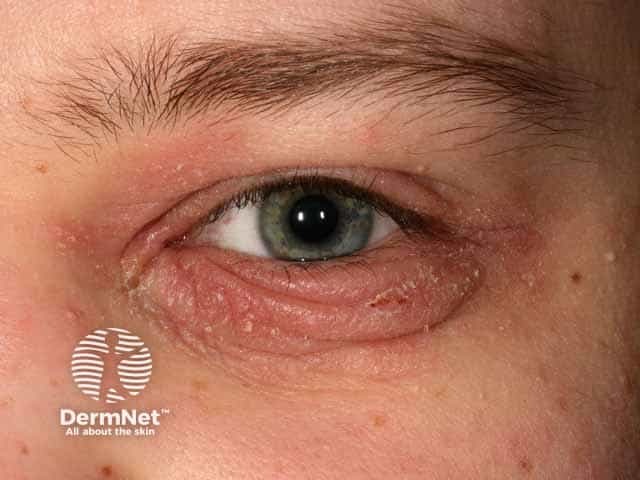
Atopic dermatitis
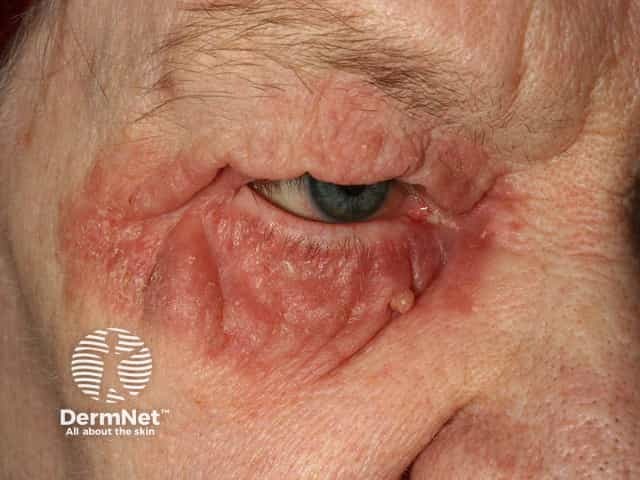
Seborrhoeic dermatitis
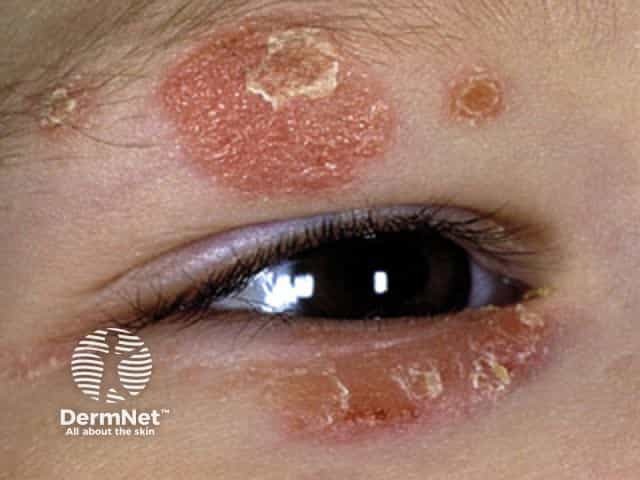
Psoriasis
What are the symptoms and signs of blepharitis?
Blepharitis is often uncomfortable.
- Itching of the eyelids
- Watery or dry eyes
- Burning and foreign body sensation especially upon waking
- Light sensitivity
It is also unsightly.
- Red, swollen eyelid margins
- Abnormal growth of eyelashes due to scarring of the eyelid margins
- Flaking skin around the eyes resulting in matting of the lashes
- Crusted eyelids
- Scales may cling to the lashes
- Frothy tear formation
What are the complications of blepharitis?
Complications from blepharitis include:
- Stye (hordeolum) – a red tender lump caused by an infection of an oil gland of the eyelid.
- Chalazion – a painless firm lump caused by inflammation of the oil gland of the eyelid. Chalazion can be painful and red if it becomes infected.
- Abnormal or decreased oil secretion resulting in excess tearing or eye dryness.
- Corneal infections due to abnormal or decreased oil secretion.
It is important to distinguish these from sebaceous carcinoma, a cancerous skin lesion that may rarely grow on eyelid skin.
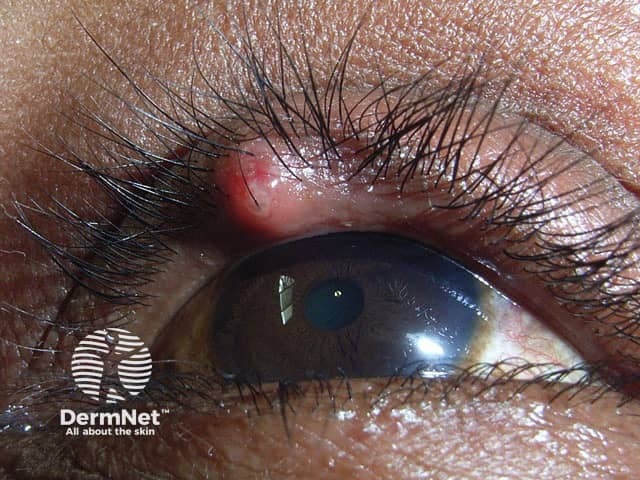
Stye
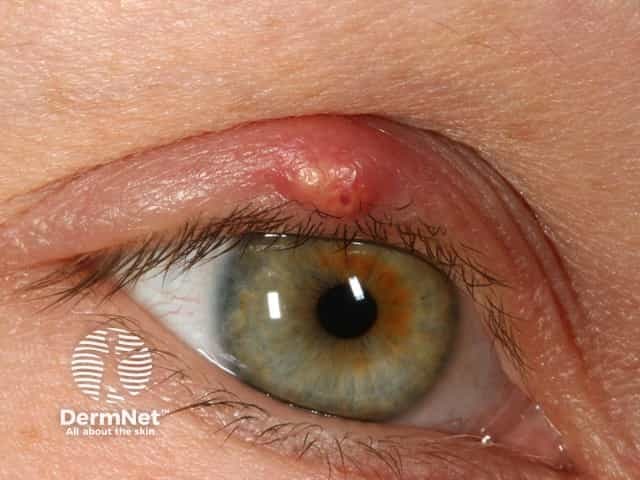
Stye
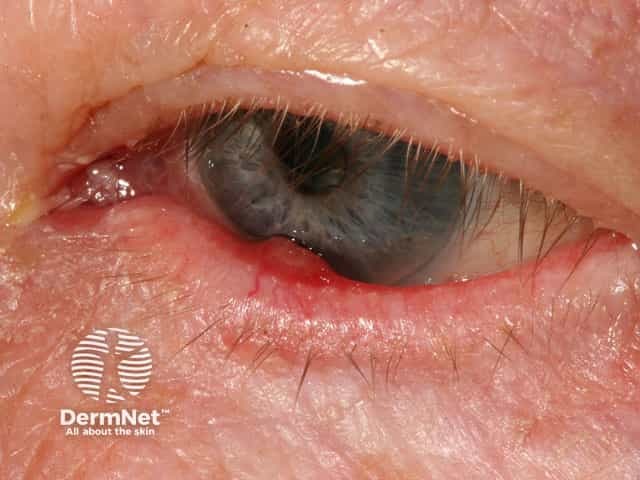
Chalazion
How is blepharitis treated?
Treatment for blepharitis involves keeping good eyelid hygiene. Warm wet compresses applied to the eyelid will help to dislodge the crusts. The eyelid can be lightly scrubbed with a cotton swab using a mixture of water and baby shampoo.
In patients with posterior blepharitis, eyelid massage (firm presssure to the edge of the eylids at the base of the eyelashes) will help to clear the oil accumulated in the glands.
In severe cases of blepharitis, antibiotic or topical steroid eyedrops may be necessary. Where seborrhoeic dermatitis and rosacea are also present, these will need to be treated, usually with antifungal agents or oral tetracycline respectively.
References
- Jackson WB. Blepharitis: Current Strategies In Diagnosis And Management. Can J Ophthalmol 2008 Apr;43(2):170-9.
- Kanski JJ. Eyelids. In: Clinical Ophthalmology: A Systematic Approach. 4th edition. Boston ; Oxford : Butterworth-Heinemann1999: 9-12.
On DermNet
- Eyelid dermatitis
- Seborrhoeic dermatitis
- Ocular rosacea
- Conjunctivitis
- Rosacea
- Demodicosis
- Sebaceous gland carcinoma
Other websites
- Blepharitis — Medscape Drugs & Diseases
- Periorbital infections — Medscape Drugs & Diseases
- Hordeolum and Stye — Medscape Drugs & Diseases
- Blepharitis — MedlinePlus
- Eye infections — MedlinePlus
